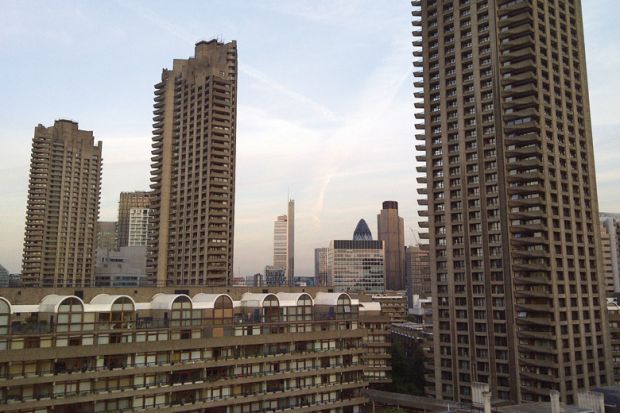If I learned anything in architecture school, it was how to stalk buildings. Long before the days of Google Images, our professors pounded into us the importance of experiencing great works of architecture in person and even passed along a few ethically questionable tricks on how to get into hard-to-access places (only once did this land me in a police station). Barnabas Calder, like me, is a committed architectural stalker. We don’t feel we understand buildings until we’ve spent serious time inside them, preferably staying overnight. And he makes no attempt whatsoever to hide the fact that he loves big, concrete buildings. Me too!
Raw Concrete is Calder’s confessional on both counts: his commitment to architectural stalking and his obsession with Brutalism, the post-war architectural style that featured massive, rugged and seemingly uncomfortable buildings. The book unfolds like an autobiographical play, as the author recounts with remarkable sharpness his personal experiences in 10 or so Brutalist monuments. These range from canonical buildings such as the Barbican estate (pictured above), the enormous multipurpose complex to house “rich workers” in the City of London, to a little-known bunker-like retreat on a remote promontory in northwest Scotland. Heroic architects and academics are his protagonists, both well-known figures such as Sir James Stirling and Reyner Banham and no less powerful but less familiar men such as Sir Leslie Martin, whom Calder claims orchestrated major Brutalist commissions from a backstage position. The text is lively and enthusiastic – almost like the voice of a tour guide through the monuments as Calder comes to grips with his obsession – and the message is clear: these buildings have been misunderstood and they are the best buildings ever constructed. We need to love them.
I kid you not. Calder looks at the bunker-like National Theatre in London and Christ’s College, Cambridge (“a concrete battleship”) alongside Nicholas Hawksmoor’s beloved Baroque churches. He truly believes that James Stirling and James Gowan’s University of Leicester Engineering Building, “a sneering, hip-thrusting Elvis of a structure”, resembles a masterpiece by the sculptor Gian Lorenzo Bernini. For Calder, these concrete hulks evoke the optimism of the 1960s better than the music of the Beatles. “Brutalism was the high point of architecture in the entire history of humanity,” he says in the introduction, “one of the greatest ever flowerings of human creativity and ingenuity.”
What I particularly like about Raw Concrete is that it’s not a history book. Like its subject, the book bucks convention. There is no literature review, and few references to other secondary works on Brutalism, the history of concrete or the vast inventory of Brutalist buildings outside Britain. It’s chatty, anecdotal and thoroughly entertaining. Its tone, references and almost comic understatements – “It was the Second World War that shook things up” is my favourite – are aimed at a generation too young to have experienced the optimism of the post-war decades first-hand. Echoing the book’s conversational, easy tone, and adding to its appeal, Raw Concrete also has an interactive component, inviting like-minded aficionados to upload photos of Brutalist buildings to the Raw Concrete website, and providing an opportunity to showcase Brutalism beyond Britain.
My advice? Read the book, load up your mobile with some rock’n’roll tunes and Calder’s online photos, and go hug some concrete.
Annmarie Adams is William C. Macdonald professor in the School of Architecture, McGill University.
Raw Concrete: The Beauty of Brutalism
By Barnabas Calder
William Heinemann, 416pp, £25.00
ISBN 9780434022441
Published 21 April 2016
后记
Print headline: A thing for those incredible hulks






